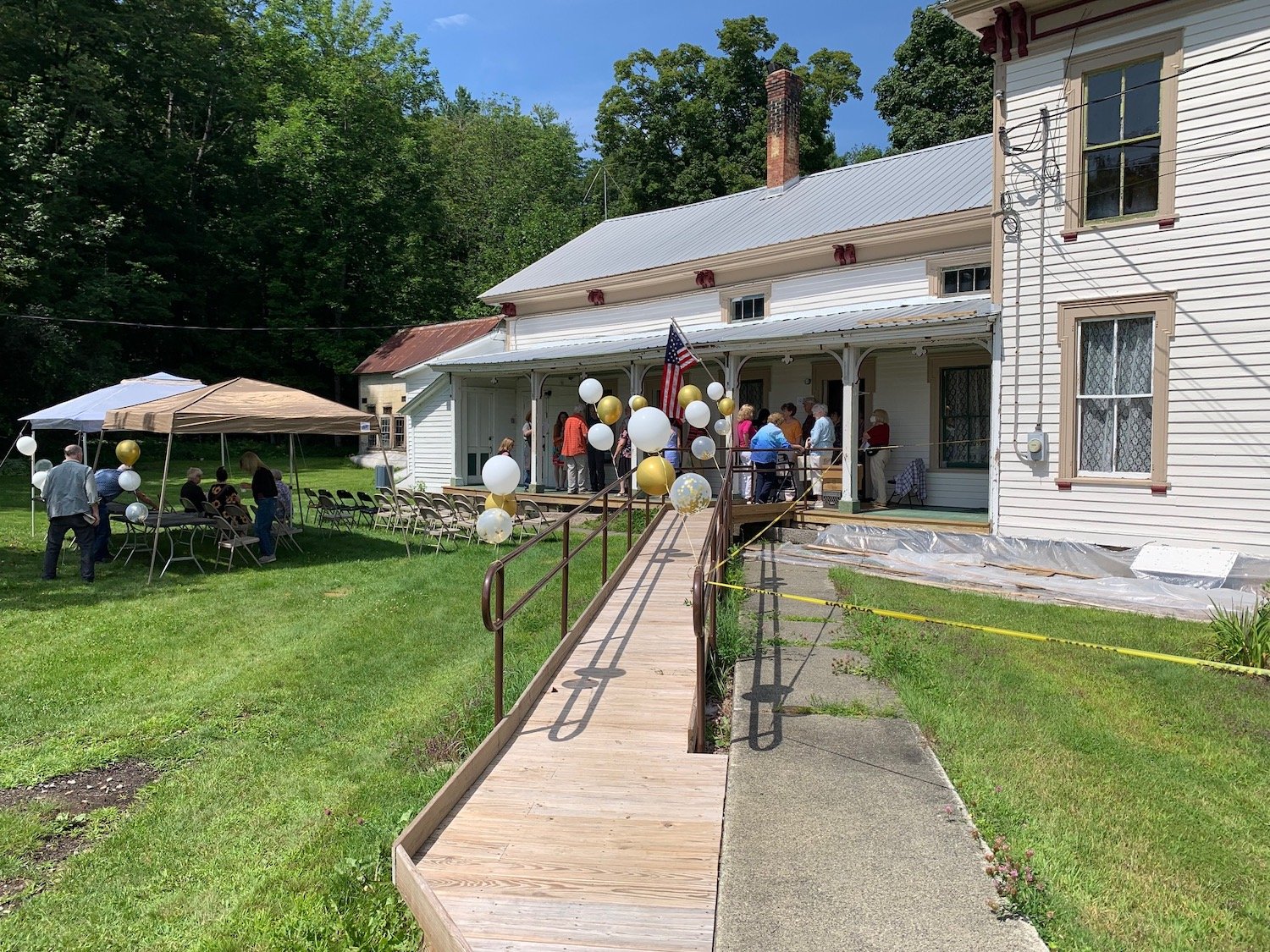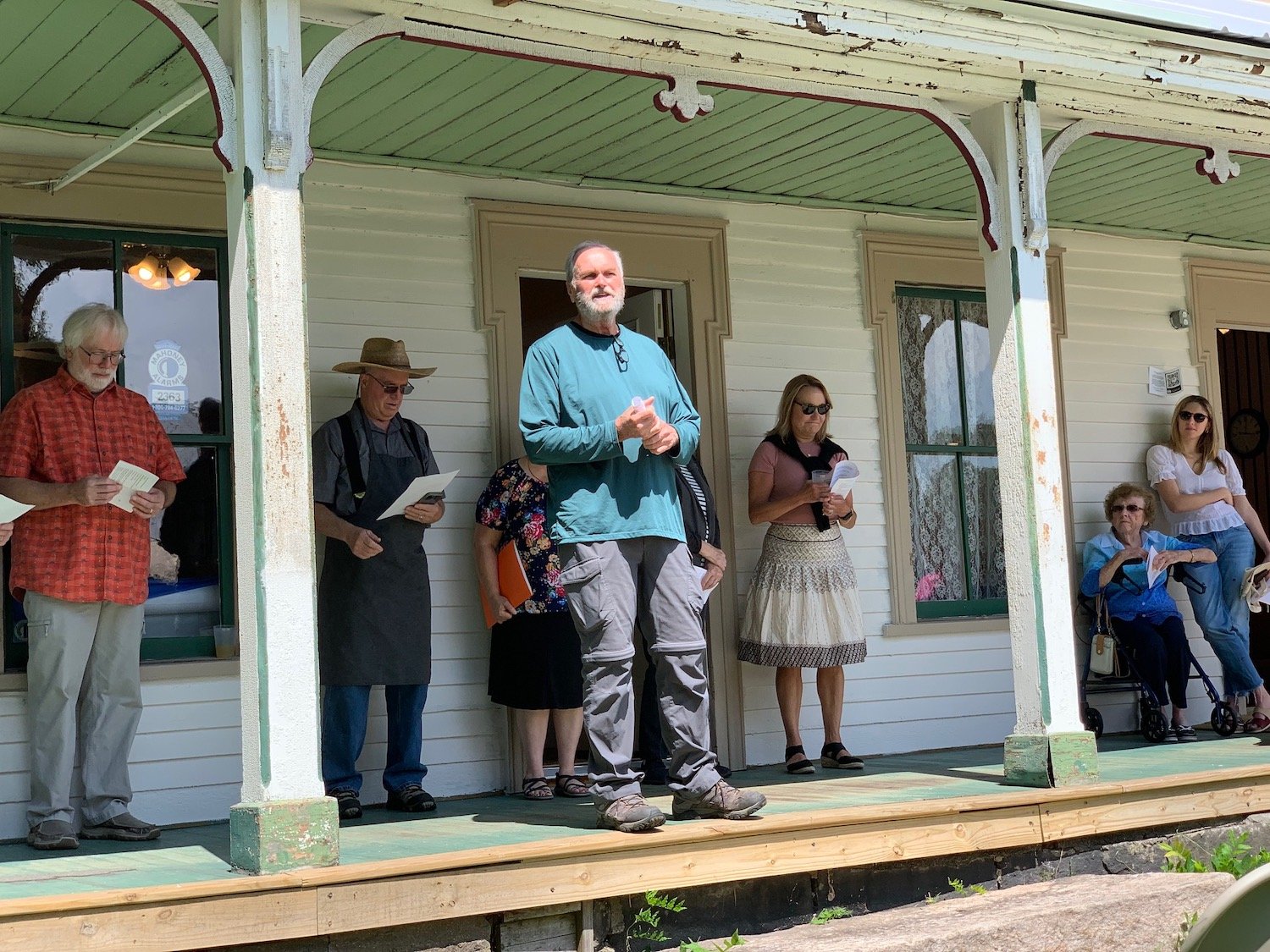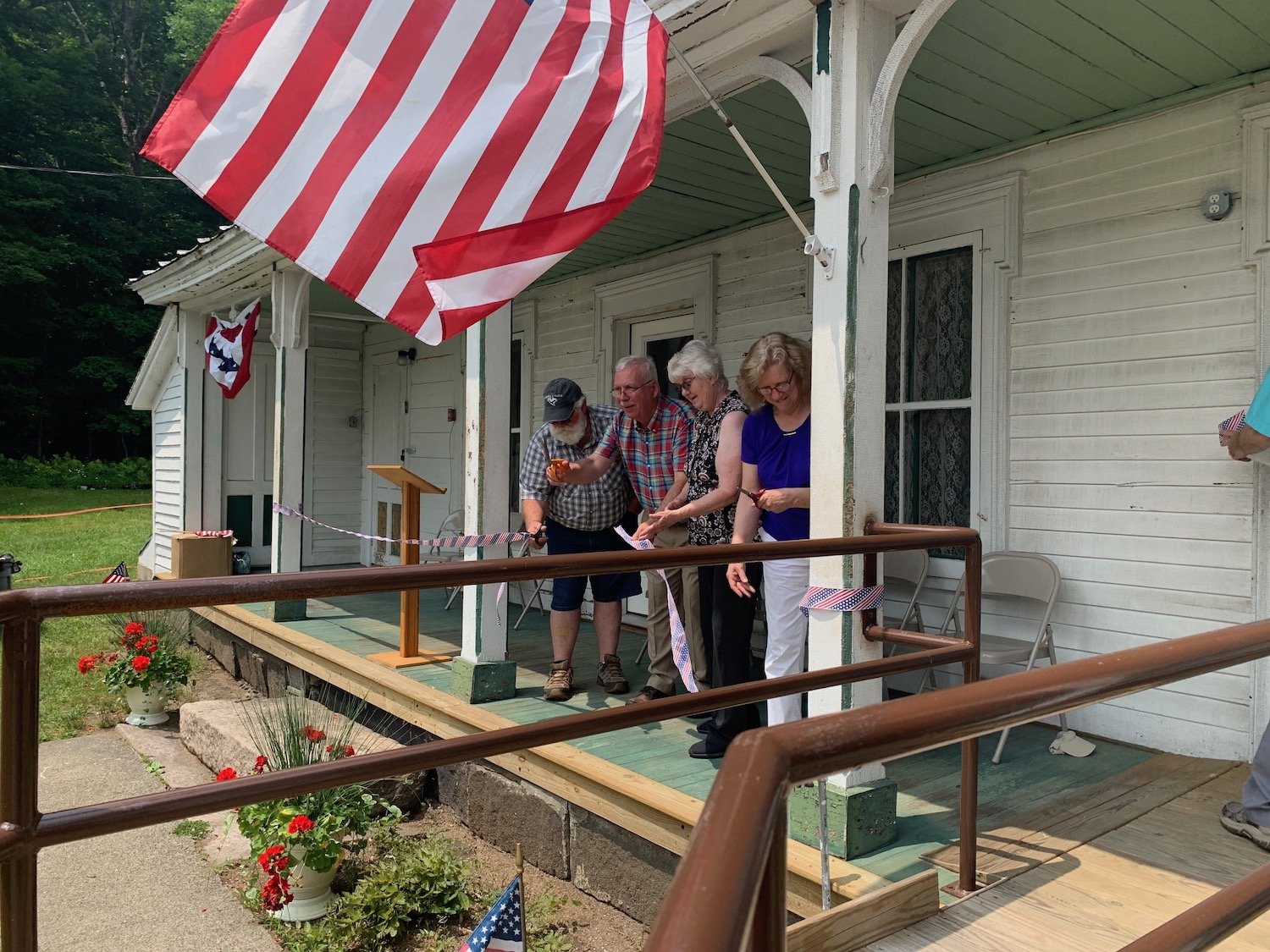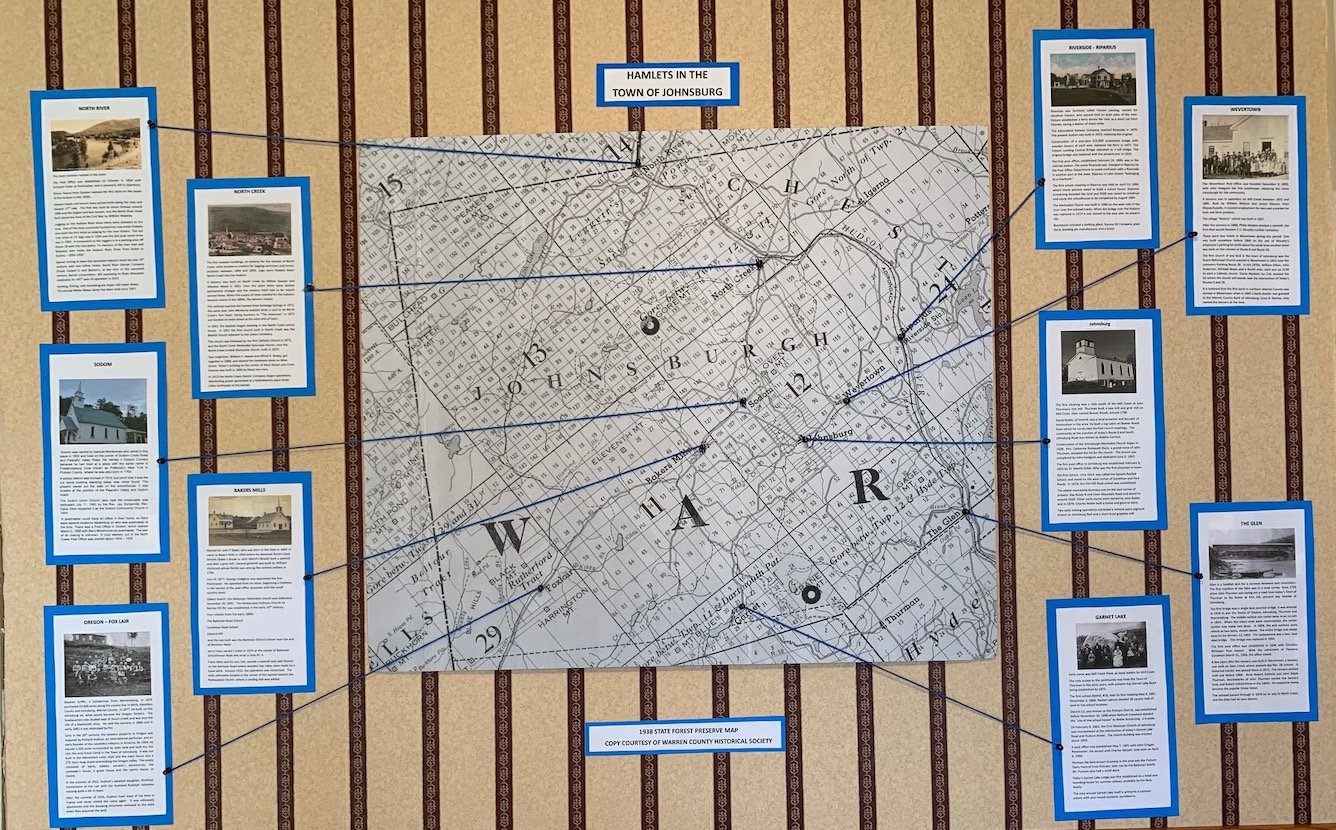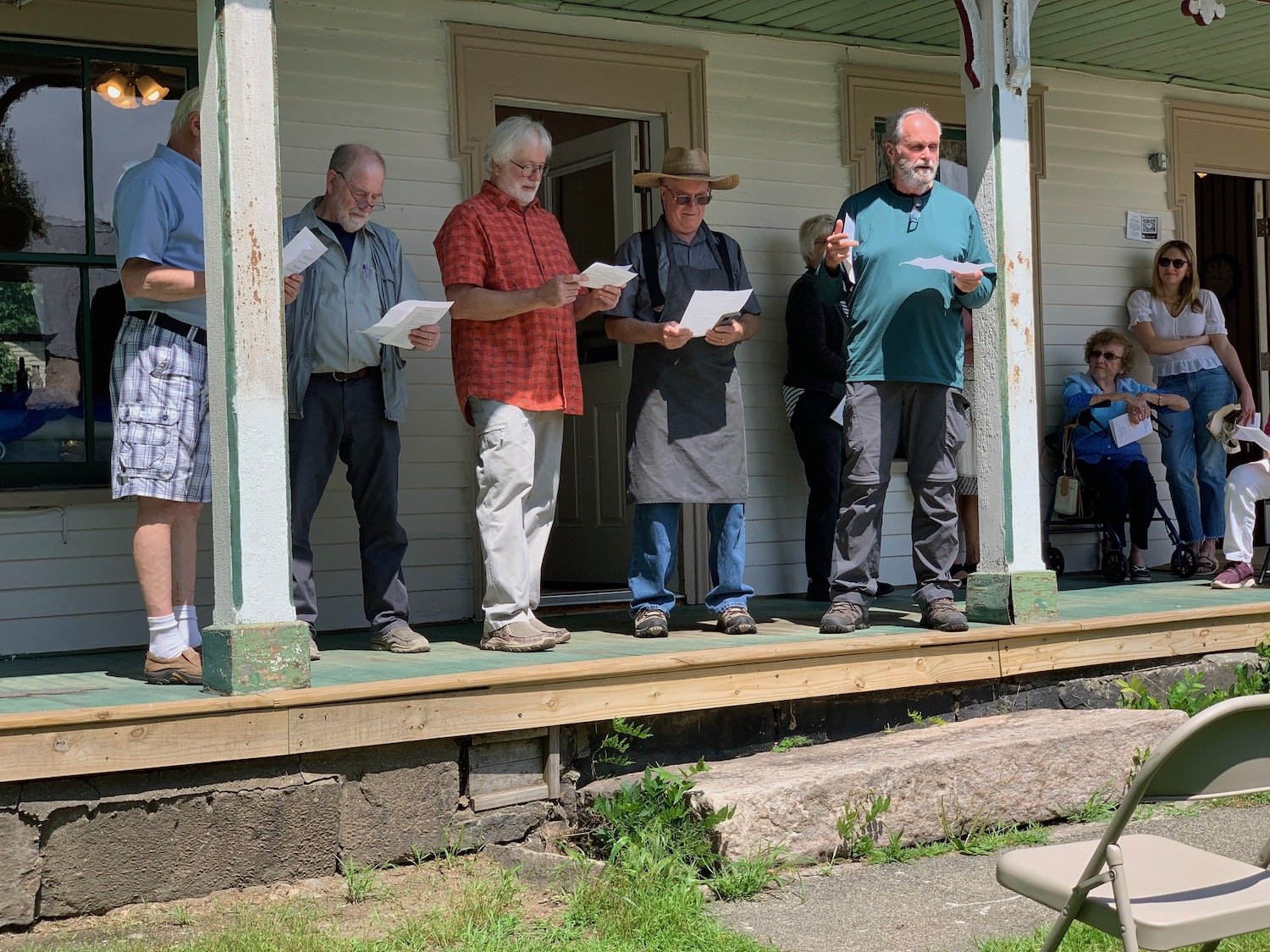A New Home for Johnsburg History
By donating $130,000 in Apple stock, Glenn Pearsall made purchase of the Waddell House by the Johnsburg Historical Society possible.
Between Warrensburg and North Creek, no structure is more distinctive than the Robert and Electa Waddell House.
On Route 28 In Wevertown at the Route 8 intersection, this 14-room cube of a mansion stands out as a testament to the determination and success of those who settled here in the early 1800s to create a civilization in the midst of wilderness. They built roads, bridges, mills, and homes. They cleared the land and grew crops. They dug mines, tanned leather, produced potash, sawed logs, and created an economy. The Waddell House proves it, built in 1870 by lumber baron Robert Waddell from planks cut in the sawmill he operated on Mill Creek.
The fact that the house not only stands but has been repainted and restored with sturdy floors that are now up to code also is a testament to local residents' love for their history, which now has a home where they can welcome the public. After two years of work on the house, the Johnsburg Historical Society opened its new museum on July Fourth weekend.
For all these years since the organization's founding in 1973, the society has had no display space. Its collection was relegated to boxes stored in a second-floor office across the street.
But now all that's all changed, thanks to Glenn Pearsall, who was appropriately saluted at the Society’s 50th anniversary celebration on August 12. Glenn made the donation of Apple stock that made the society's purchase of the building possible. The house itself is the prime artifact in the Society’s collection.
By moving into the Waddell House, the society now is eligible for a permanent charter from the New York State Board of Regents, which says an organization must have a public space for displaying artifacts and materials before it can call itself a museum. We now can call the Society’s collection the “Waddell Museum.”
Old photos are among the society's most prized possessions. Hamlet by hamlet, they have filled the house's first-floor rooms with them. Logging camps. Stagecoaches. Barton Mine. The Adirondack Hotel in North Creek. Cunningham's General Store. They go on and on, each giving us a different window into history and helping us to imagine the way things were.
Crowdsourcing Johnsburg’s History
A major achievement 30 years ago.
At the 50th Anniversary Celebration, five current and past board members presented a theatrical interpretation of the organization's founding in 1973. Pat Strohmeyer played the role of co-founder William Waddell, Don Seauvageau portrayed local North Creek News-Enterprise newspaper owner/editor George Gardner, Ron Allen played the part of founding society board member Lewis Waddell, Arnold Stevens portrayed the society’s original treasurer James Murphy, and Delbert Chambers portrayed society co-founder Jim Ordway.
Historical Society Secretary Kathy Allen recounted a long list of activities and achievements over five decades. Among the most notable: Establishment of the North Creek Depot Museum, in which the Society played an important role, and the Society’s publication of River, Rails and Ski Trails, the compact history of Johnsburg to which 50 people contributed in a massive crowdsourcing effort in the early 1990s.
Society President of book project coordinator Sally Heidrich wrote the foreward:
“Assembling this history has been a full time job for most of us for almost a year. It has been very gratifying to see so many interested people devote so much of their time researching and writing stories. It has been frustrating, too — to discover that there is no end to this. There is always more information to gather — more subjects to research and include. We have had to accept the fact that our attempt at a history of the Town of Johnsburg will only be a first draft for those who follow and complete a second book.”
While we’re not writing that second book, we in the First Wilderness Story Collaboration are working in the same spirit, collaboratively producing Stories from Open Space and an app we’ll launch in September that will enable visitors to hear the histories of places of interest on the spot. River, Rails, and Ski Trails provides a rich trove of material for these works.
A Brief History of the House
The Waddell House not long after it was built in 1870.
A financial advisor who embarked on a career in real estate with his father in the 1970s, Glenn Pearsall knows the Waddell House well. Before its historic building was destroyed in a fire, Pearsall Realty was located right next door and Glenn would sit out front on Sunday afternoons when business was slow. Ernie Noxon, who owned the Waddell House at that time, would join him and tell him stories. Glenn would repeat these stories as he made conversation with customers driving around the area. He discovered they were a great way to make a connection and, ultimately, a sale.
One day someone said to Glenn, "Hey, you should write these great stories down." So he did. The result was Echoes in These Mountains, which Glenn published last year in a voluminous second edition, having published the first in 2008.
The book includes Glen’s six-page photo- illustrated essay on the Waddell House, abbreviated below:
“Robert Waddell was one of the great lumber barons in the region. He owned thousands of acres of timberland in the area. He also served as Town Supervisor during the Civil War and later as a member of the New York State Assembly. Inspired by a house his wife Electa seen in Albany while her husband was serving in the state legislature, she had him build her a similarly styled home on a parcel of land she had bought here in Wevertown.
“The Waddell House was built in the Italianate style popular in the United States between 1840 and 1885 as part of the "picturesque" movement that was a reaction to the classic rigidity of the Georgian, Federal and Greek Revival styles that had been prevalent in this country for 100 years.
”The house features a low-pitched hipped roof with wide overhanging eaves and large decorative brackets under the eaves, within the cornice. Windows of this style are usually tall and narrow and are commonly arched or curved, with decorative crowns and moldings above. On the roof is a belvedere, also known as a cupola, common to that style. The belvedere provided a great viewing platform to oversee work on the farm, but also during warm months, leaving the shutter windows open, the warm humid air of summer would rise and be drawn out of the house.
“The interior of the house includes two fine marble fireplaces, custom Italian plaster moldings, and a wooden stair rail going up to the second floor over eight feet long that has been artistically bent and twisted as one piece of wood.
“Robert Waddell died at the young age of only forty-four in 1878. On his wife’s death, the house passed to their daughter Susan. Over the years the house has passed from mother to daughter, quite unusual in that age. “
If You Go
Johnsburg History Weekend, coming up September 8 through 11, will be your best next opportunity to tour the new museum. The Society aims to open the museum on Fridays and Saturdays through Columbus Day. For details, keep an eye on the society’s web site.
Before you go, you may find it helpful to browse Deana Wood’s brief history of Johnsburg. See also our interview with Glenn Pearsall.
An Invitation
The First Wilderness Story Collaboration is pleased to be collaborating with the Johnsburg Historical Society and North Creek Depot Museum in developing an app for mobile phones that will enable visitors to Warren County to listen to GPS-triggered historical narratives as they drive around the county’s scenic highways. Our initial focus is the First Wilderness Heritage Corridor, which follows the Upper Hudson River from Lake Luzerne to North River. We’ll introduce the beta version of this app, called Explore Warren County, at a presentation hosted by the Warren County Historical Museum on Thursday, September 28 at 7 p.m. at Crandall Library’s Folklife Center. Presenting “Spatial Storytelling in Western Warren County” will be Warren County GIS Administrator Sara Frankenfeld and Dan Forbush, founder and editor of Cliff & Redfield Interactive.
A Fiftieth Anniversary Photo Album
